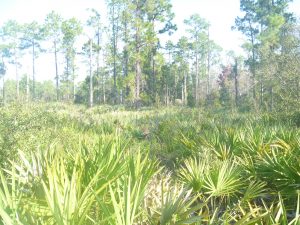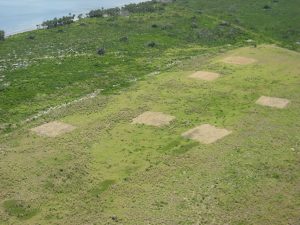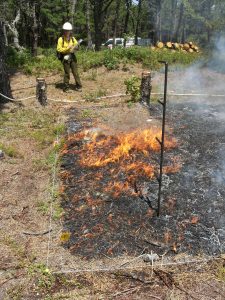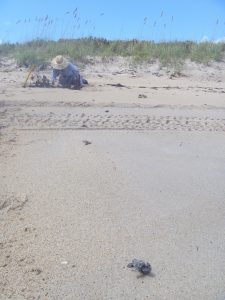The following section highlights research themes for my lab.
 1. Characterizing species responses to climate change
1. Characterizing species responses to climate change
Contrary to the majority of studies which have been conducted in more northern regions, my research team and I discovered that plants in Florida are flowering later. We identified that Florida winters are getting colder, leading plants to flower later, even though average annual temperatures are trending up.
I am interested in unveiling differences between native and nonnative plant species response to climate change with field and greenhouse experiments. I am exploring mechanisms for differences in response to climate change by native and nonnative plant species with growth chamber experiments and niche modeling. In a large-scale field-based experimental manipulation, I am testing the hypothesis that the global change factors of nitrogen deposition and human disturbance will have additive or synergistic effects on plant establishment into new habitats.
I am leading a team of fifteen researchers, including sea turtle biologists, ecological and climate modelers, and engineers to investigate the effects of sea level rise on coastal nesting species along the South Atlantic Bight. The goal of this US Fish and Wildlife Service funded research is to evaluate past nesting patterns and predict future effects of sea level rise on nesting beaches of sea turtles, seabirds, shorebirds, and beach mice populations across the South Atlantic Bight. This interdisciplinary team is comprised of researchers from academic institutions and federal and state agencies across the southeastern US, and is filling a desperate need for more models on climate change to be developed at the regional level.
 2. Predicting climatically-induced species range expansion
2. Predicting climatically-induced species range expansion
I plan to build upon my research characterizing species response to climate change by predicting climatically-induced range expansion. I conducted a growth chamber experiment to understand how biotic interactions, specifically soil microbes, influence the potential for closely related native and nonnative plants to expand their ranges with climate change. In collaboration with John Weishampel, we are exploring a novel way of predicting sea turtle range shifts with climate change, by using physiological traits as a basis for predicting organismal response to global change factors.
 3. Ecological restoration and global change mitigation
3. Ecological restoration and global change mitigation
My former graduate student, Annie Weiler, conducted a paired experimental restoration in Merritt Island, Florida, in habitat with very similar soils to our Martha’s Vineyard site. In this system, we found that removing vegetation by tilling and topsoil removal is an effective method for reducing non-native cover.
I am conducting a National Park Service (NPS)-sponsored restoration project at Cape Cod National Seashore (CCNS) in collaboration with my former graduate student, Kirsten Martin, to investigate disturbance requirements for the long-lived rare shrub, Corema conradii. Additionally, I just completed a large-scale field-based experimental manipulation to test the hypothesis that the global change factors of nitrogen deposition and human disturbance will have additive or synergistic effects on plant establishment into new habitats, which will vary by species functional type. I will use the results of this project to explore ways to mitigate the negative effects of atmospheric nitrogen deposition on plant communities in coastal New England.
4. Global change mitigation: Economic impacts and policy implications.
Species responses to climate change have been well documented and mitigation efforts for global change are increasing in number. I am collaborating with economists and natural resource modelers to quantify the economic and ecological costs and benefits of mitigation efforts for climate change on coastal organisms as well as generate policy suggestions for how to most effectively plan for species responses to climate change.

